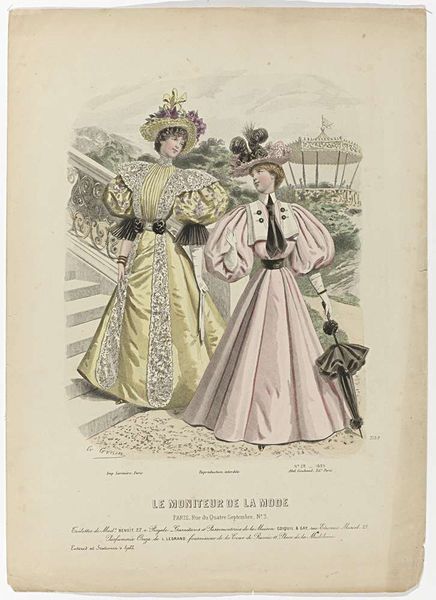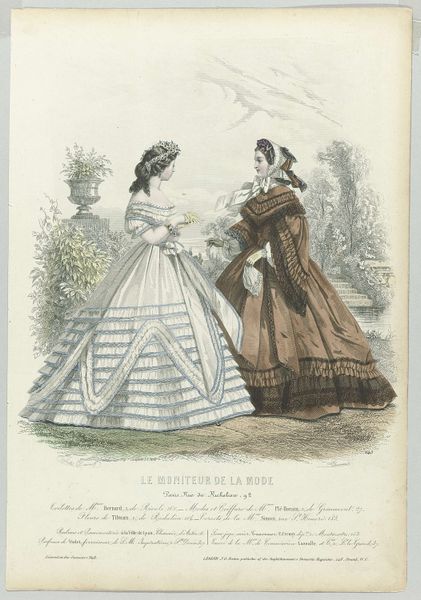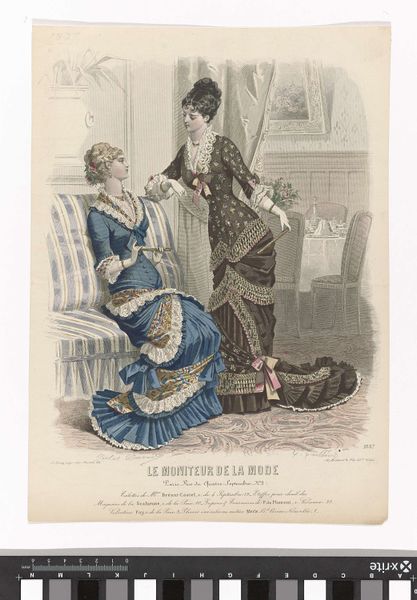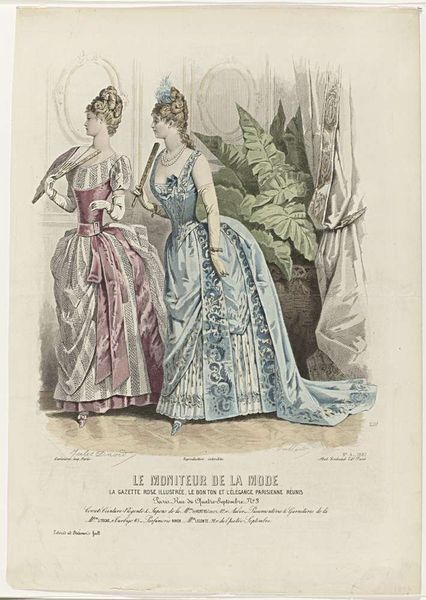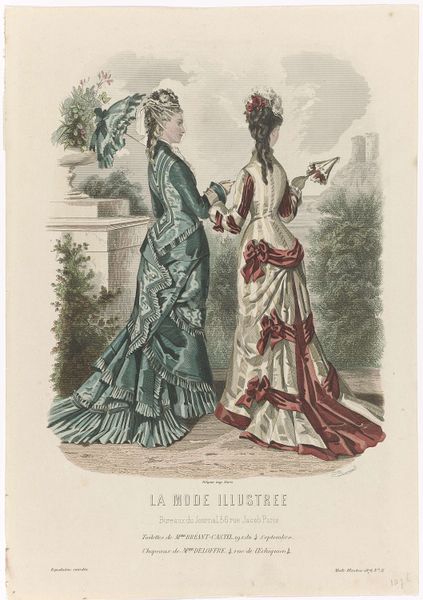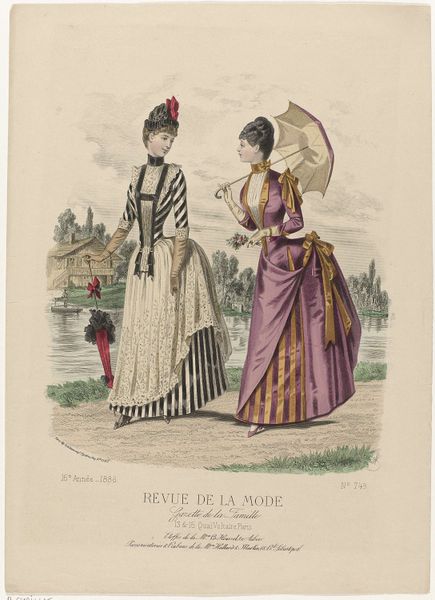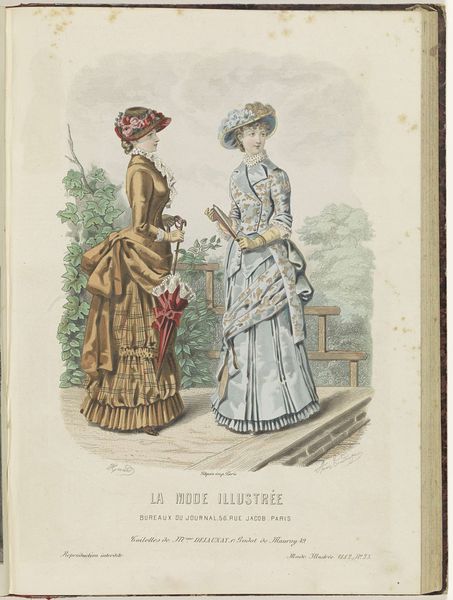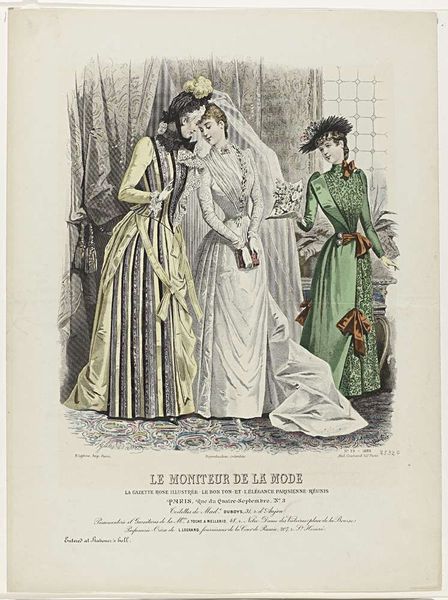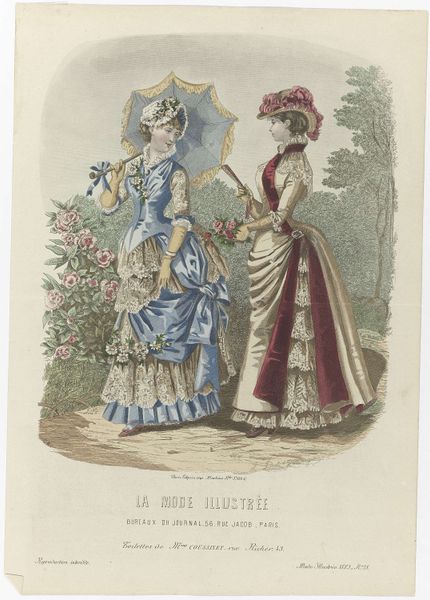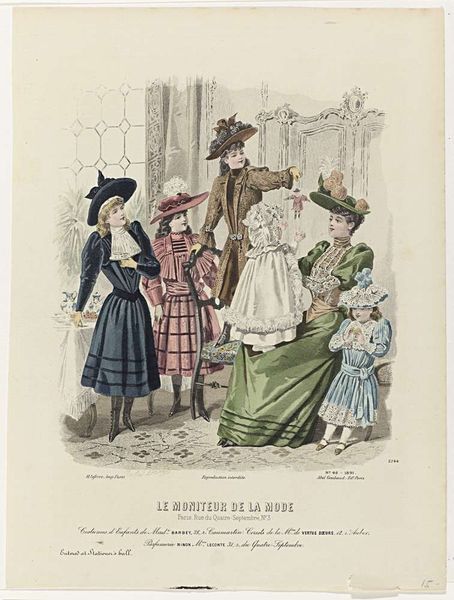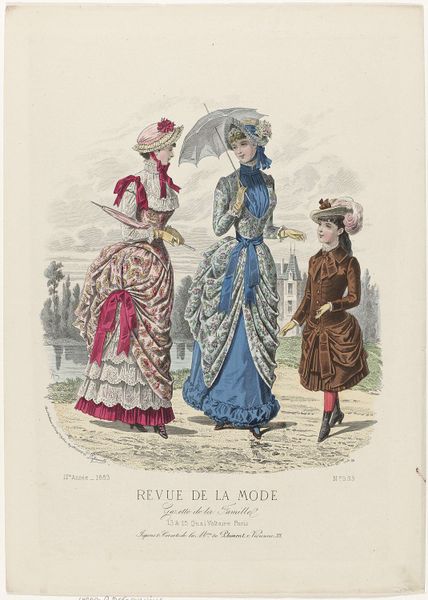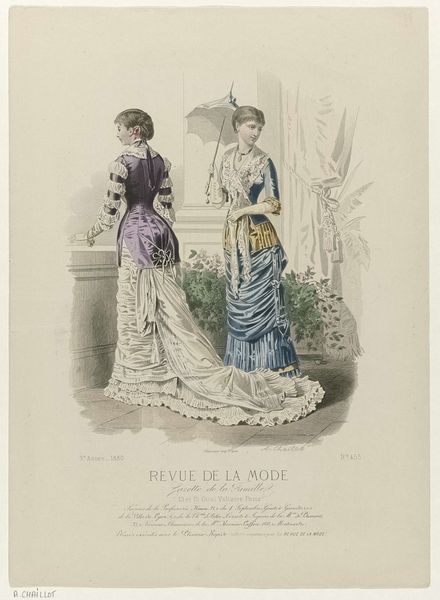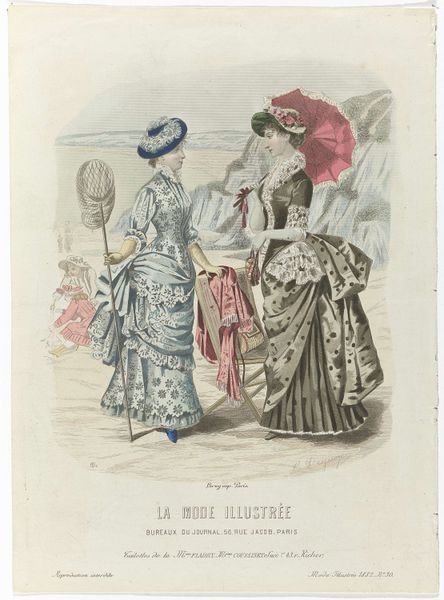
Le Moniteur de la Mode, 1889, Nr. 2546c, No. 28 : Toilettes de Mesd.elles Edon (...) 1889
0:00
0:00
drawing, lithograph, print, textile
#
drawing
#
lithograph
# print
#
impressionism
#
traditional media
#
textile
#
figuration
#
dress
Dimensions: height 394 mm, width 289 mm
Copyright: Rijks Museum: Open Domain
Editor: This is "Le Moniteur de la Mode," from 1889, by Edouard Tailland, a lithograph print with textile elements. The scene seems quite formal, depicting women and a child in elaborate dresses. I wonder, what does this print tell us about the late 19th century? Curator: We need to look at this lithograph through a material lens, really considering the labour embedded in the textile production represented here, and then its consumption. Notice the highly detailed rendering of each dress – suggesting not just artistry, but the immense industry involved in fashion production. Who was working to produce these clothes, and what were their conditions? Editor: So you're saying the image isn't just about beauty, but about the manufacturing? Curator: Precisely. This "Moniteur de la Mode" was circulated among a certain class. The labor wasn’t visible within those circles; thus, an analysis of materiality can bring to the forefront critical socio-economic considerations: What kind of raw materials do you see being implied in the scene, and how available were they? Editor: Well, you have to imagine that access to fabrics, dyes, and even the printed publication itself reflects class privilege and a complex supply chain… Curator: Indeed. The print acts as a commodity sign, representing these objects and ideals. Consider this in relation to impressionism. Does this artwork adopt similar production/consumption motifs? Editor: Thinking about how impressionism often portrayed scenes of leisure… I never considered that production was being obscured. Curator: It is interesting, right? This artwork gives us a perspective beyond the immediate image, urging us to contemplate material, labour, and socio-economic dynamics of its time. It highlights a complex reality. Editor: I’ll certainly consider that lens going forward; that changes how I will examine artworks moving forward.
Comments
No comments
Be the first to comment and join the conversation on the ultimate creative platform.
